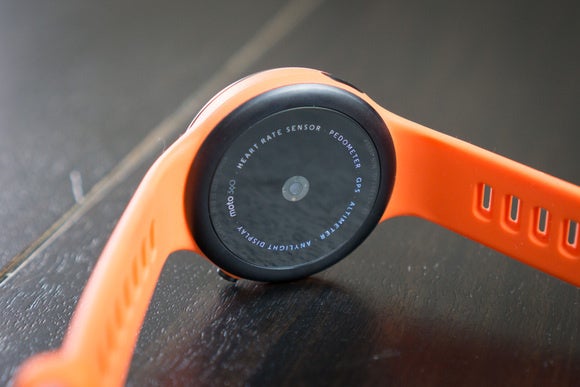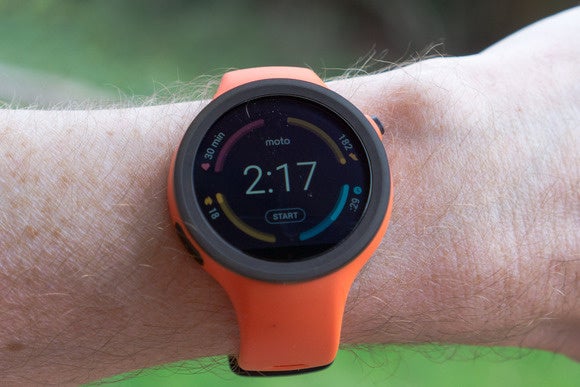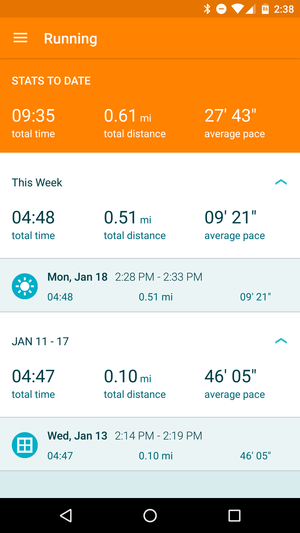I hate running. It’s not just because I have bad knees it hurts to run—I would rather lift weights get my cardio on a recumbent bike where I can distract myself playing mobile games. Motorola’s fitness-focused version of the Moto 360 is not for me. It’s for people that get their workouts on the pavement treadmills. For that specific subset, it’s a good enough Android ar watch, but if you enjoy broader fitness activities, you’ll be frustrated by its limitations.
A Moto 360 for the outdoors
The Sport version of the Moto 360 shares much in common with the 2nd generation Moto 360 we like so much. It’s fundamentally the same hardware software, with a few notable differences. It runs all the regular Android ar apps works just as well as a -powered watch as the 2nd gen Moto 360 does. As with most Android ar watches, it works with both iOS Android, though the Moto Body phone app is Android-only.
It only comes in a large 45mm size with a bulky integrated silicon case b. So, unlike the Moto 360, you can’t opt for the smaller 42mm size if you have smaller wrists, you can’t swap out bs, you can’t customize the style (the Sport comes in black, white, a shockingly bright orange). This is an odd choice, because the device isn’t any more dust or water-resistant than the regular Moto 360; both are I7 rated not fully waterproof. The Sport version is probably better protected against shock damage, but the complete lack of customizability seems a high price to pay for that.

The Moto 360 Sport features the same heartrate sensor as the regular Mot 360, whick works “all right.”
The Sport features a 300 mAh battery—smaller than the 400 mAh battery in the 46mm size of the stard Moto 360, equal to that in the 42mm size. Motorola claims “up to a full day of use with ambient mode on,” which is about right in my experience, though the battery life varies greatly depending on whether you use the integrated G. On days when I didn’t run with it, I had no problem making the battery last. If I spent an hour running with the built-in G tracking me, I probably wouldn’t make it through the day without popping it onto the charging cradle for a while.
Anyght display
The Moto 360 Sport’s other chief hardware difference is in what Motorola calls its Anyght display. In bright outdoor light, the screen switches from the usual backlit D to a front-lit reflective D display. It’s supposed to make it easier to see in bright sun while saving battery, it works, after a fashion. en the display is “active” in full color, it is backlit as hard to read in the sun as any other D. en the watch kicks into ambient (black white) mode, all the white pixels have a reflective backing that makes them easy to see in the sun.

The display is easy to read in the sun when in Ambient Mode, but activate it it goes back to hard-to-see color backlit mode.
Therein lies the issue. If you just want to glance at the ambient mode info while outdoors, the Anyght display works wonders. But as soon as you start tapping swiping to use the watch, you’re back to using the normal backlit color D that’s hard to see in the bright sun.
For runners only
The Moto 360 Sport tracks your heartrate (as the Moto 360 does), it’s reasonably accurate as wrist-based fitness gadgets go. But the Moto Body software included, while easy to use, is optimized for a single activity: running. It will track distance accurately through G, measure your heartrate while you run, but it’s not really going to give you credit for your 0X workout or weightlifting. l the software’s goals are based around steps, distance, or running pace. The software keeps track of calories burned (including your base metabolic calories estimated from your sex, age, height, weight), but it never seemed to count calories I was burned unless I was running, too. If I wanted to get credit for calories burned while working out, I had to start a run in the Moto Body app pound out some steps.

Motorola’s app is great for tracking runs, but not for any other sort of exercise activity.
For runners, Moto Body is well-made. It’s clear easy to use, with simple-to-set timers goals. You can share data with Fit, UA Record, Map My Fitness, Fitbit, or Strava.
Too many compromises
In taking a general smartwatch platform (Android ar) optimizing it for fitness, Motorola has compromised too much. The elegant style broad customization features of the stard Moto 360 are gone. Battery life is worse when you use the watch for its intended purpose (tracking runs). It’s bigger bulkier, but no more dust or water resistant. If you get all your exercise running or walking, it’ll do a good job of keeping tabs of it, but you’re not going to be satisfied at all if you exercise in other ways.
ly, most users would be happier just buying a regular second-generation Moto 360 a sporty b.














